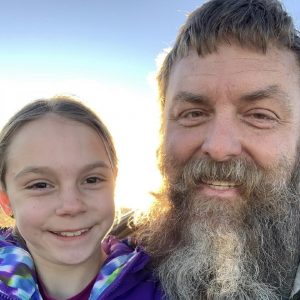
Coley Burgess grew up on a conventional farm, then studied mathematics and electrical engineering…and he brought his scientific rigor and curiosity to a 20-acre pecan farm that he and his family bought in southern New Mexico. The ground was bare and turned to mud––and then cracked, dry earth––after he irrigated. But a series of happy accidents, including the purchase of a milk cow for his daughter’s digestive health, led to his growing grass and cover crops and eventually letting go of herbicides, pesticides, and even chemical fertilizers.
He will be speaking at the Regenerate Conference, which is in Denver, CO, Nov. 2-4, and also on line.
TIMELINE:
2’09 a happy series of accidents
4’08 looking at what they could plant in the orchard that wouldn’t interfere with harvesting pecans
4’51 stopped plowing to see what would come up naturally
5’40 one year heavy rain meant that they had to harvest through knee-high grass, and it worked fine
6’15 found HMI and learned more about rotational grazing
7’38 when they bought the farm the land between the trees was completely bare. As they’ve gotten more ground cover, the ground has become more resilient
9’02 the ground retains more water during droughts much better when the ground is covered
10’10 they use their water allotment–but it seems like the crop is better
10’44 yield is more consistent than it was before
12’15 hasn’t used pesticides since 2014, and stopped using herbicides after that.
13’06 Cutting out fertizilizer is a process that needs to be done gradually. Now he’s down to zero.
13’54 working with the idea that in order to keep bugs away, you need to have healthy trees with a proper mineral balance, so you can supplement minerals instead of killing bugs
16’19 cows spread minerals through their manure
17’53 free choice mineral feeder–the cows select what they want and need
20’45 they have twenty cows, which is the optimal number
22’18 running animals on irrigated orchard land gives you a “double crop”
23’40 the sell three to six cows a year for beef
24’30 busting they myth that grasses and trees compete for water
26’14 more water loss through evaporation on bare ground
26’49 a lot of naysayers out there telling him he’s doing it wrong
27’46 vegetation doesn’t interfere with harvesting pecans
28’37 barely uses tractor, the cows do all the work
29’24 all of this is actually less work than it was before
30’52 now they’re no longer losing topsoil through erosion
32’05 the work is more enjoyable
32’33 a number of new beneficial insects have shown up since they started doing regenerative practices
33’57 noxious weeds have decreased to almost zero
35’09 his definition of “weed” has changed
36’47 working with Advancing Eco Ag
37’48 neighbors not generally interested in learning about what he’s doing
39’21 seed and fertilizer dealers will tell you that cover crops can’t be planted in pecan orchards, even though it’s working great for those who do it
41’08 he had too much NPK and not enough micro-nutrients…finding the balance
42’30 wants to start keeping honeybees
43’45 the importance of nutrient density–and getting more money for your crop if you produce more nutritious food



Subscribe:
Apple Podcasts
Spotify